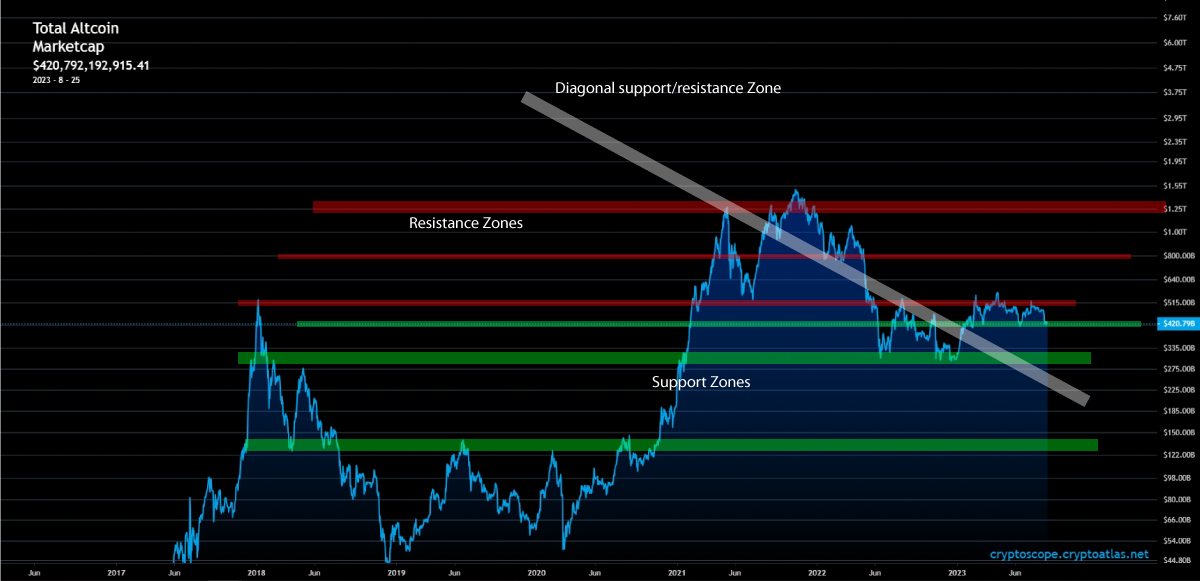Traders' Toolkit: Leveraging Altcoin Market Cap for Optimal Strategies
Classical TA
Like most charts, Classical technical analysis can be performed on the altcoin marketcap chart. This includes support and resistance. The altcoin marketcap excluding stable coins chart respects support and resistance to a great degree.
Using this technical analysis is another useful indicator to traders. When the altcoin market cap chart visits former resistance or support, the likelihood of all altcoins either falling or jumping from that zone increases depending on the significance of the zone. Let’s take a look at some zones down below.

Patterns in the Altcoin Market Cap Excluding Stable Coins Chart
The altcoin market cap can also be a tool to perform technical analysis on the broader altcoin market. The metric follows certain patterns which create a field of probability that a trader can look at. Some patterns have a higher probability of going in one direction than the opposite direction.
Take for example, falling wedges. These patterns have a 70% chance of breaking upwards and a 30% chance of breaking downwards. Thus, when we see this pattern in the altcoin market cap excluding stable coins chart, it is likely that the entire market is going to go upwards (70% chance).
We can see various other patterns In the altcoin market cap chart image below.
